Seed Saving 101

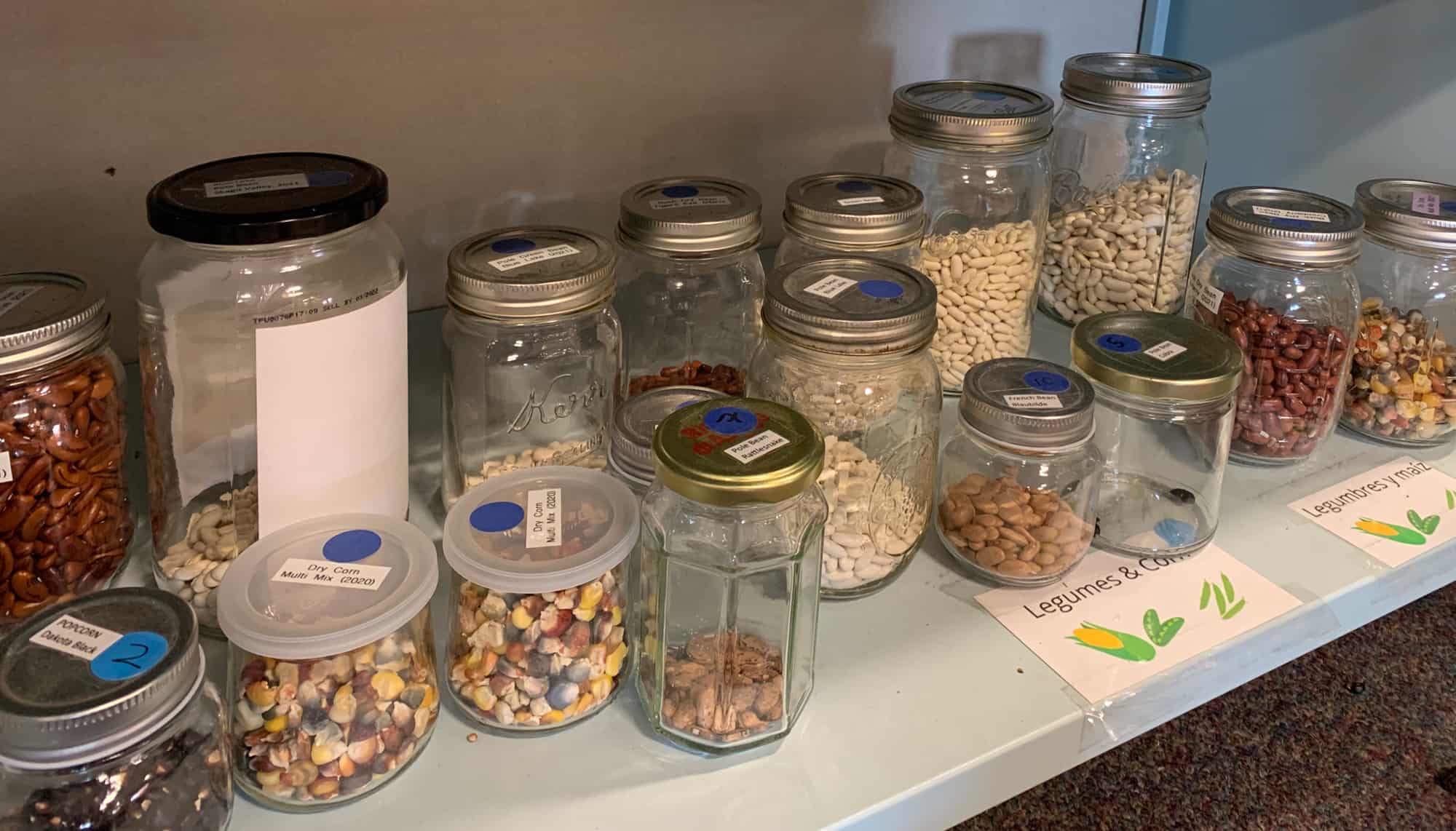
Seed Saving and Sharing
Open the door to learning about plants in a whole new way.
By Sheri Rylaarsdam, Skagit County WSU Extension Master Gardener
Want to see an adult in an eight-foot-tall sunflower costume? Let your vegetables grow into monsters? Save some cold hard cash? Save an heirloom plant or design a new one?
These are all possibilities once one starts down the road of seed saving. You can begin almost accidentally by not pulling all the radishes in the garden. Several weeks later you'll notice they have grown six feet tall with multiple branches and hundreds of seedpods. The original radish is an unrecognizable nob at the bottom of the magnificent plant.
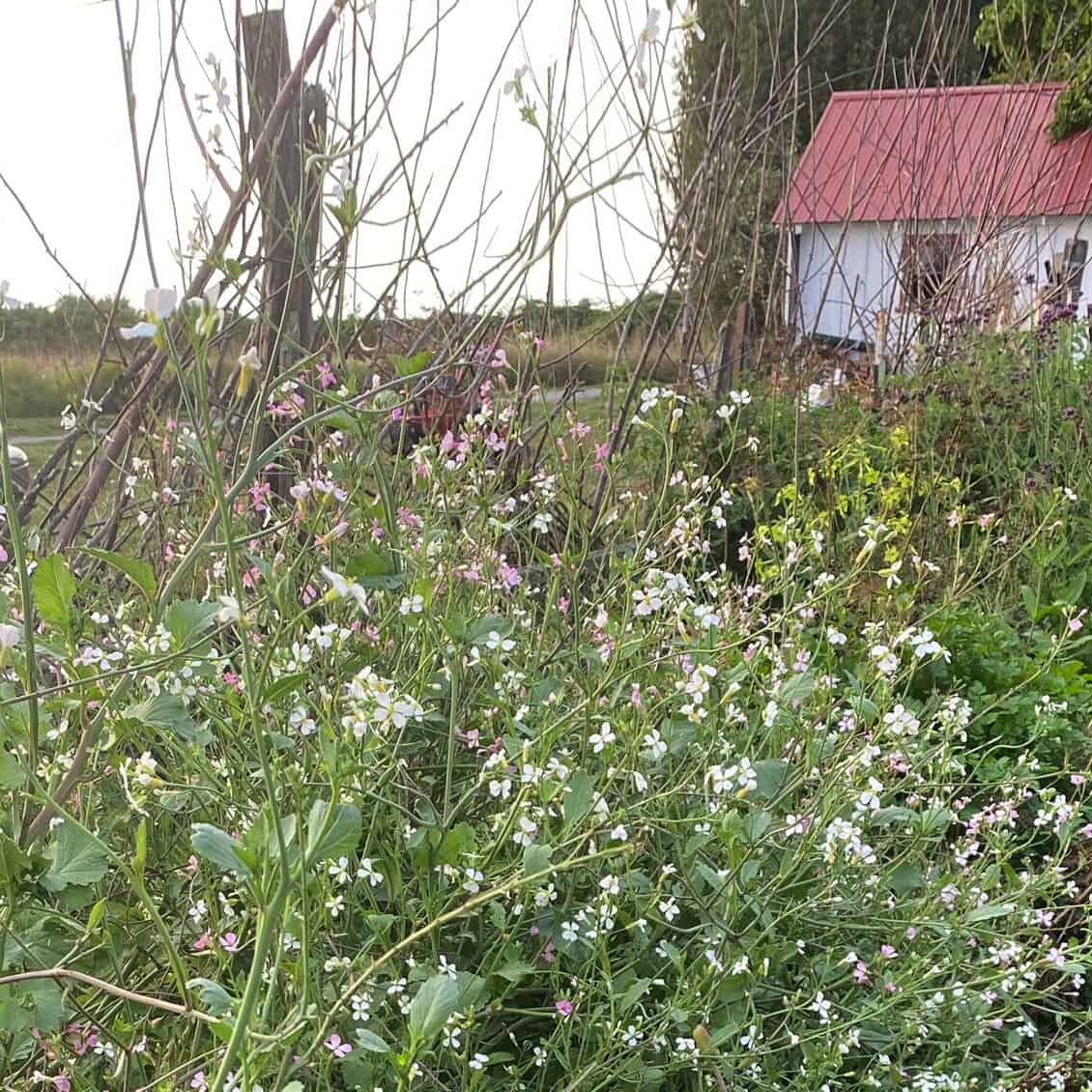
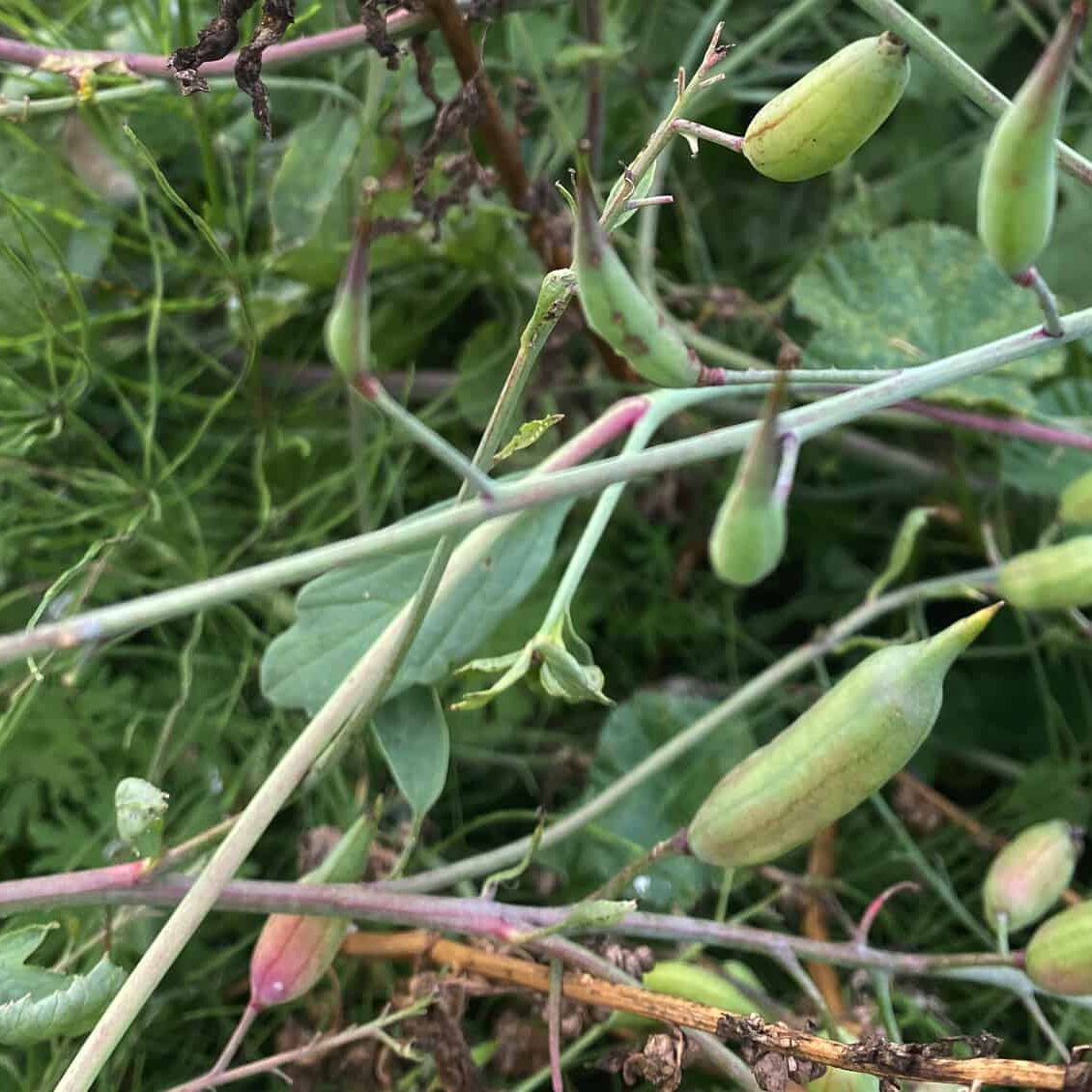
Now you know getting started is easy enough. So next you may be asking "What other vegetables produce harvestable seeds when left to grow?"
First, always save seeds from open-pollinated plants, not hybrids. Open-pollinated seeds are plants pollinated openly by wind, rain, or flying critters. Heirloom seeds are included in this category, named so because the saved seeds have produced 'true to type' plants for fifty years or more. The seeds collected from hybrid plants are sterile because they are a manually-produced cross between two varieties and will not grow true to form.
It is easiest to save inbred or self-pollinated seeds. These are seeds of plants whose pollen is transferred within the same flower or from one flower to the other within the same plant. Peas, beans, lettuce, and most tomatoes are examples of plants with inbred or self-pollinating seeds.
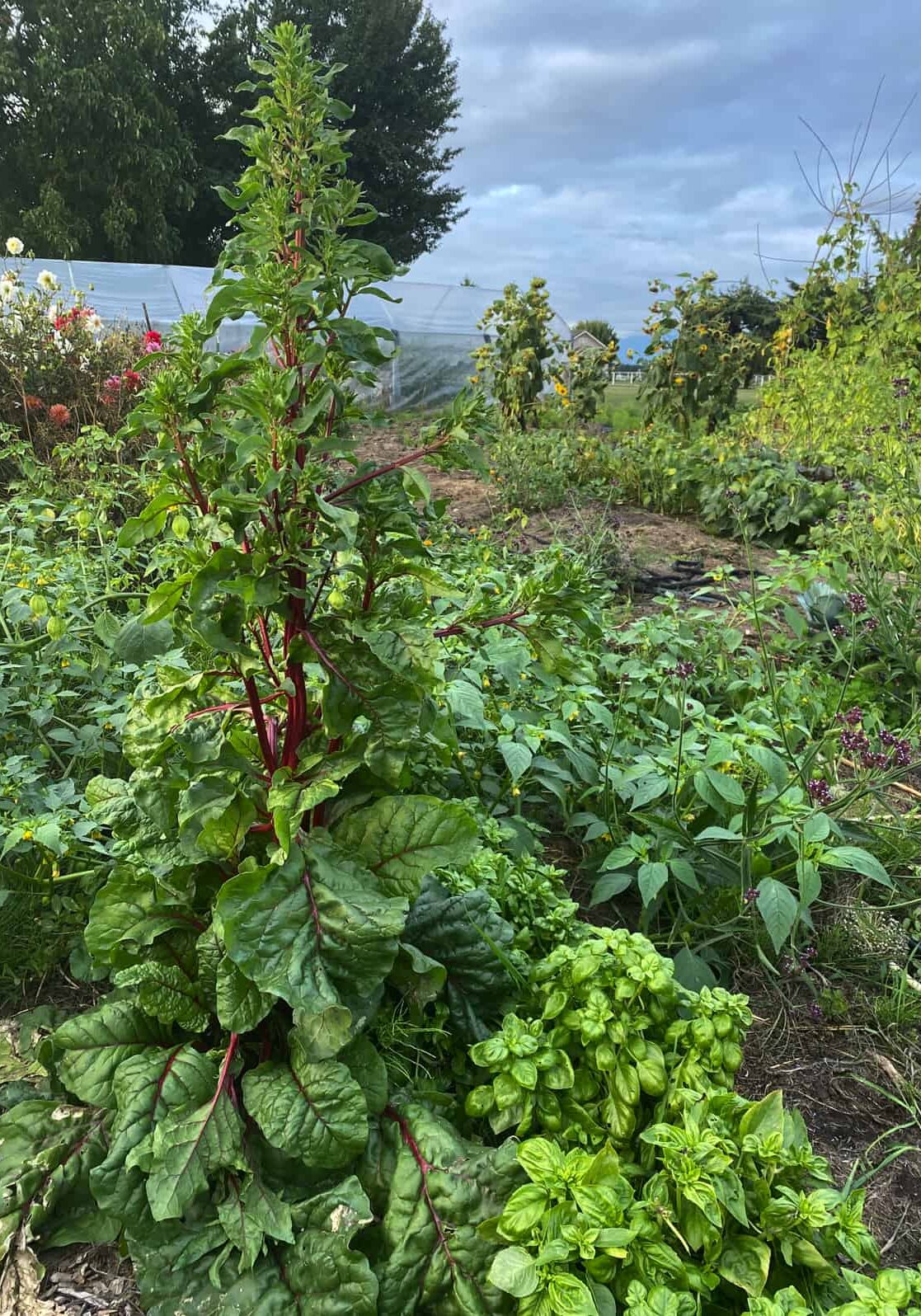
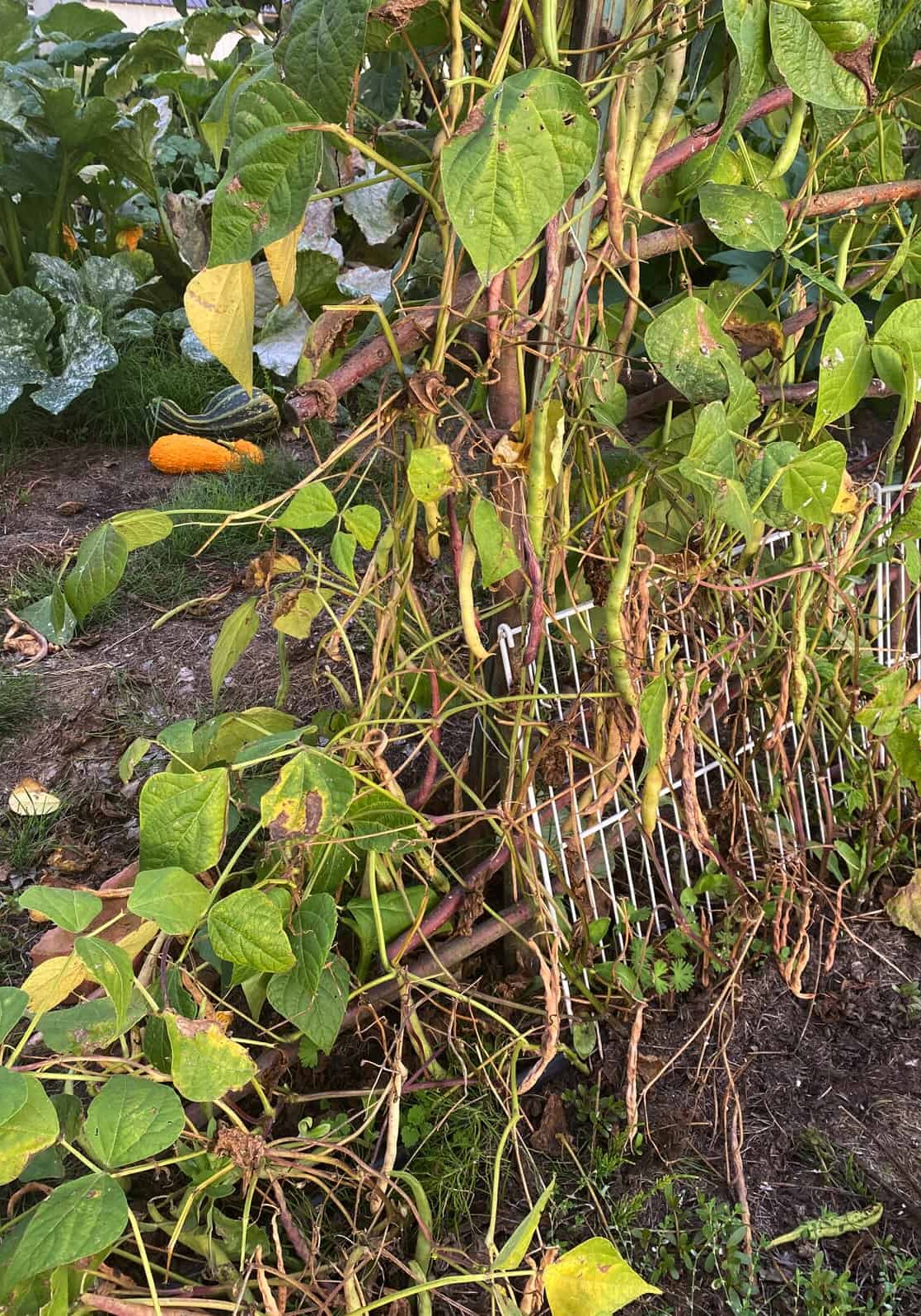
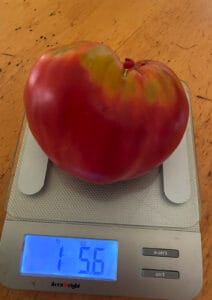
Harvesting Self-Pollinating Seeds
Let beans and peas dry on the plant, then pick the pods to shell. Thresh the pods by hand. The chaff can be winnowed by tossing the pods in the wind and catching the seeds in a basin.
Lettuce seeds send up a seed stalk, ripening two to three weeks after flowering. Harvest daily by shaking the seeds into a paper bag. The lettuce feathers and chaff can then be separated from the seeds using a fine mesh screen.
To save seeds from tomatoes, choose fully ripe tomatoes. Cut across the equator of the tomato and scrape out the gel and seeds. Let the seeds ferment for a couple of days until a black or white mold forms on top. This helps remove any pathogens on the seed surface and also removes the natural germination inhibitor that coats the seed. Strain off the mold and rinse the seeds slowly and carefully. Drain in a fine mesh strainer and dry thoroughly on a saucer. Be sure to label the saved seeds with the name of the variety and the date they were saved. Since the viability of seeds is most affected by fluctuating temperature and moisture levels, it is important to store them in a cool, dry place-ideally in a tightly closed glass jar in the refrigerator.
Harvesting Wind-Pollinated Seeds
Varieties of wind-pollinated plants need to be separated by distance or mature at different times in order not to cross. Wind-pollinated plants include beets, chard, spinach, and corn. Corn pollen is light and can be carried long distances by the wind. A distance of two miles is the recommended isolation distance. A minimum of two hundred plants is needed to have enough genetic diversity.
Harvesting Seeds Pollinated by Bees
Bee-pollinated plants include many ornamental flowers and these vegetable families: Apiaceae (carrots, dill, parsley, cilantro, parsnip, chervil, caraway), Amaryllidaceae (onion, garlic, shallots, scallions, chives, leeks), Brassicaceae (cabbage, broccoli, cauliflower, Brussels sprouts, turnips, kale) and Cucurbitaceae (squash, pumpkins, gourds). If vegetables have the same Latin name they can cross. Avoid cross-pollination by allowing just one type of vegetable from each family to go to seed. For example, if one lets leeks go to seed, do not let onions, garlic, shallots, scallions, or chives go to seed at the same time. The seed-producing vegetable also needs to be isolated from other seed-producing vegetables in its family by one-half mile. Cucurbitaceae are often hand-pollinated. Professional seed savers often use a system of cages to avoid cross-pollination.
Carrots, cabbages, beets, and onions are examples of biennials. These should be left in the ground or stored over the winter and replanted in spring to produce seed in the second year.
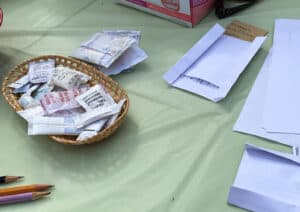
Start with something easy. Choose a variety of beans, peas, lettuce, or tomato that is delicious, grows vigorously, is a good producer, and is resistant to pests and diseases. Once you’ve started saving seeds, collect all the seeds you can. Then you’ll have plenty to plant next year, some to share, some to donate to a seed library or take to a seed swap.
Sharing seeds by donating to a seed library can make it easy for new gardeners to get started. Supplying seeds and information encourages gardeners to be out in nature, eat healthy food, and save money. Seed swaps are an excellent way to get seeds for the garden for the whole next year. Seed swap events usually have music, food, classes, and sometimes adults dressed up like sunflowers!
One can support biodiversity by supporting seed banks, buying from seed companies that increase biodiversity, and contributing to seed libraries and local seed guilds. The U.S. has lost a large percentage of its food plant biodiversity in the last 100 years. By saving seeds, you are doing your part to preserve the genetic diversity which is vital for the future of our food supply.
Seed stewards work to increase, not decrease, biodiversity. By saving and growing open-pollinated varieties of vegetables in the same area for many years and selecting for taste, disease resistance, and productivity, one can develop an improved vegetable. The selected variety will have the characteristics necessary to withstand unfavorable local conditions such as drought or heavy soil.
Seed saving is a gateway to learning about vegetables and flowers in a whole new way, witnessing their whole life cycle and how they interact with other plants. It has led to a new appreciation for nature’s abundance. Through seed sharing, I’ve contributed to altruistic causes that make a difference in the daily lives of people in our community. And I’ve met interesting people that make me smile—such as the fellow seed sharer wearing an eight-foot-tall sunflower costume.
REFERENCES:
Ashworth, Suzanne, 2002, Seed to Seed, Seed Savers Exchange
Gardening for Everyone: Seed Saving/WSU Lewis County Extension/ s3.wp.wsu.edu/uploads/sites/2057/2022/02/Seed-Saving-Handout.pdf
Op-ed: Saving Heirloom Seeds Can Protect Crop Diversity/civil eats/civileats.com/2022/01/27
Community Horticultural Fact Sheet #17/ WSU Jefferson County Extension/ extension.wsu.edu/jefferson/master-gardener-seed-library
Hubbard, Kristina K. January 11, 2019
https://civileats.com/2019/01/11/the-sobering-details-behind-the-latest-seed-monopoly-chart/

ABOUT THE AUTHOR:
Sheri Rylaarsdam is a Skagit County WSU Extension Master Gardener, Class of 2019. She is an avid seed saver and vegetable grower.
_________
Questions about home gardening or becoming a Master Gardener, may be directed to: Skagit County WSU Extension Office, 11768 Westar Lane, Suite A, Burlington, WA 98233; by phone: 360-428-4270; or via the website: https://extension.wsu.edu/skagit/mg/
